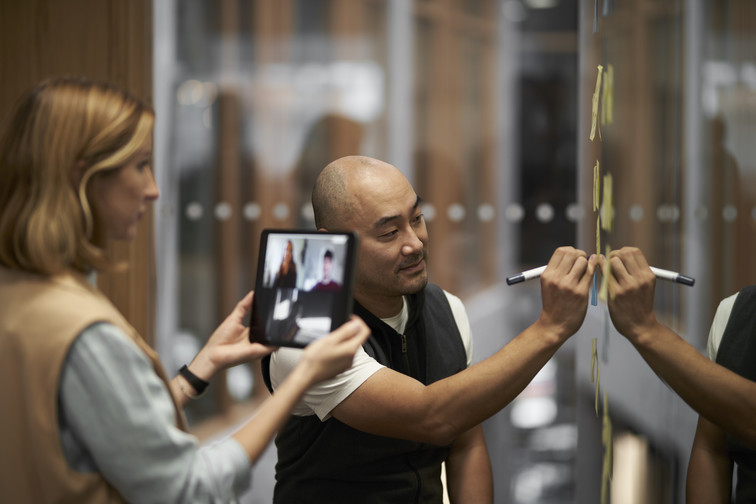Last week we attended the Service Design Global Conference in Dublin, which we have been looking forward to for the last few months. This was the 11th edition of the conference and this year there were 820 guests from 44 countries, making this a truly international event.
The theme of the conference was Designing to Deliver and how we can ensure the design of the service is what gets delivered and makes a real impact. In this blog post, we want to share some of what we learned and our reflections from the event.
The conference
The conference started with a bang when four drummers woke up the crowd, encouraging the audience to join in, making it fun and a bit interactive all at once. What a great start we thought eager to see what was next.
During the next two days the conference was a mix of presentations and workshops. There were so many different presentations, topics and people walking around, a real buzz feeling in the atmosphere. It gave a real feeling of wanting to learn more.
Altogether there were 33 presentations, 12 workshops and 80 speakers from around the world, a lot of diversity, making it a fun and curious place to be. There were common presentations in the mornings and afternoons, and breakout sessions in the middle of the day.
We had selected the tracks we wanted to follow in advance. There were long lunch breaks of 90 minutes which felt different and nice, especially for us living in Norway where we usually get just 30 minutes. It gave us an opportunity to network, meet new people and learn what others are doing.
Highlights from our favorite presentations and workshops
Understanding the culture of the organisation in order to change
Tim Lucey, Chief Executive of Cork County Council, had an inspiring talk about their change programme. He emphasised the importance of understanding the attitude of an organisation, and creating a shared vision – without this a culture of change will be prohibited. He talked about how they had involved both employees and customers in how they designed and delivered the services.
Tim established Ireland’s first public sector Service Design Centre – Service rePublic. It demonstrates how this has led to an environment where innovation thrives and customer-focused, design-thinking is not only becoming the cultural norm; but is delivering meaningful and measurable results for the citizens. We see the importances of getting leaders with a human center mindset, really understanding the human needs and how to make a positive impact.

Tim Lucey, Cork County Council.
We all think differently
A great and fun workshop from Michel Cloosterman, Lego Serious play, called Bricks and Business. It started by everyone getting six lego bricks and a challenge to build a duck. Not surprisingly everyone’s duck was slightly different – leading to the point that everyone thinks differently, potentially rewarding when doing innovation.
Through the Lego Serious play technique the idea is to open up people’s mindset and seeing new and different perspectives in order to come up with new ideas. We were given different challenges and exercises based on the pillars of the Serious play method; iterative, meaningful, social interactive, actively engaged and joyful. It will be fun to try out the duck challenge at Visma!
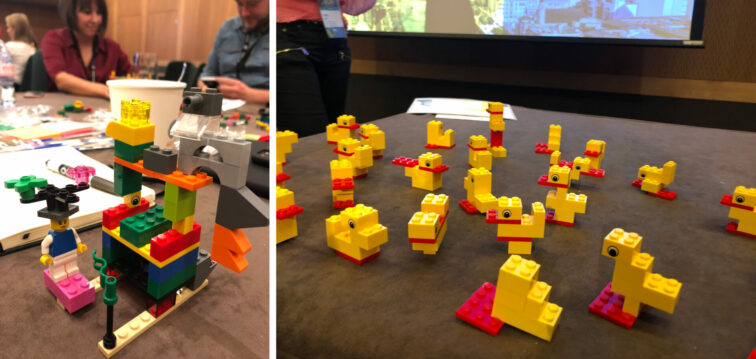
Breaking down silos
Lara Hanlon from IBM had a workshop that reminded us of some useful ways of working better together and improving collaboration to deliver better outcomes. She focused on a stakeholder mapping exercise and how to understand what the goals are for the different stakeholders and how to clarify our assumptions as early as possible.
She was great with using words and taking us through the workshop step by step. She was both showing and telling! She also showed us how to reflect on what you know, what you think you know and what you need to understand and how you can reduce risk by learning more.
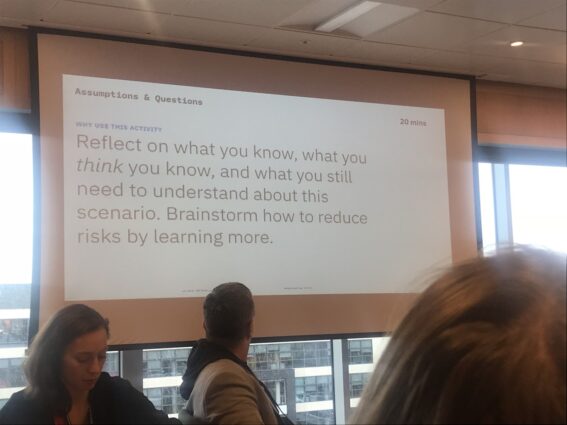
Humanizing: The future of work
According to recent research, companies that create and sustain a culture where employees thrive are three times more productive than those that do not, states Stefan Moritz from Veryday. Companies need to start focusing on employee experience – a key tool that helps companies deliver better engagement, performance and growth capabilities.
Currently, leaders are focusing on digitization to create competitive advantage. Stefan Moritz believe that humanization, or a focus on people and reimagining how we want to work in the future, is the next frontier. One way to do this is by understanding the employees dreams and finding ways of exploring them. An idea we really liked and maybe something we can consider in Visma.
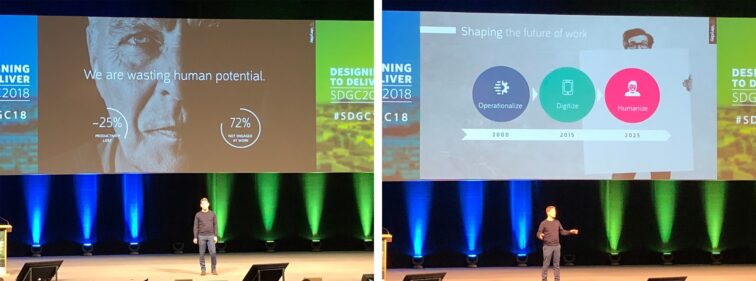
Beyond NPS – why the silver bullet CX metric misses the mark
A very interesting workshop by Katie Monteith (PwC) and Marie Serrano (Ontario Cabinet Office) looking at new ways to translate user needs and behaviours into quantifiable and actionable measurements that demonstrates the value created both for the users and organization.
The new proposal had three elements: Experience factors, timeline and reference point. The experience factors are the foundational requirements that should be delivered in a service for the user and organisation to deem it a good experience. The timeline looks at the critical moments in the experience. And the reference point is the benchmark against which you measure the quality of the experience. There were definitely some good ideas here that we hope to make use of.
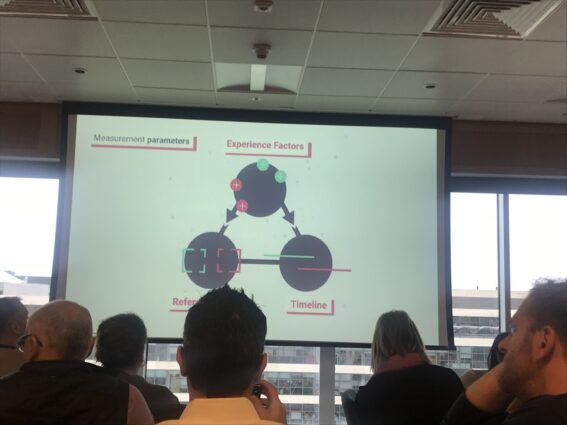
Our takeaways from the main themes
Overall we really enjoyed this conference. There were particularly three themes that was mentioned throughout the conference; collaboration, employees and humanization. These are our main takeaways from those:
- Collaboration
We all know the value of collaborating. Companies are not that good at collaborating yet – we are all trying to figure out how we fit in with our own tools and methods. We need to find a way to better work together as this is where the true values comes from. This is both in terms of getting people together and working towards the same vision, but also in terms of agreeing on how to work by integrating the best from the different tools and methods across disciplines. - Employees
People are not always engaged at work, and since the employees are at the heart of any organisation we need to understand why that is. We need to dig deep to understand what truly drives the employees, because employees need to be empowered. By empowering them they become confident, and the desire to really deliver value to both the customers and the organisation grows. - Humanization
We have been very busy digitizing everything, but we need to move into the future of humanization, where human strength outranks the computer by our critical thinking, creative thinking and compassion. In 2000, efforts were on operationalizing, and in 2015 it was all about digitizing. 2025 should be shaped by humanizing the workplace. “Our humanity is our competitive advantage” says Stefan Moritz.
Our reflections
We were happy with this conference and learnt some new tools and techniques that we can use here in Visma, and look forward to trying them out. Looking back at the presentations and workshops there were only a few that really spoke about the “Design to Deliver” theme. We would have liked even more practical tips and tricks on this subject, and how to get leaders to be great leaders with a human center mindset.

